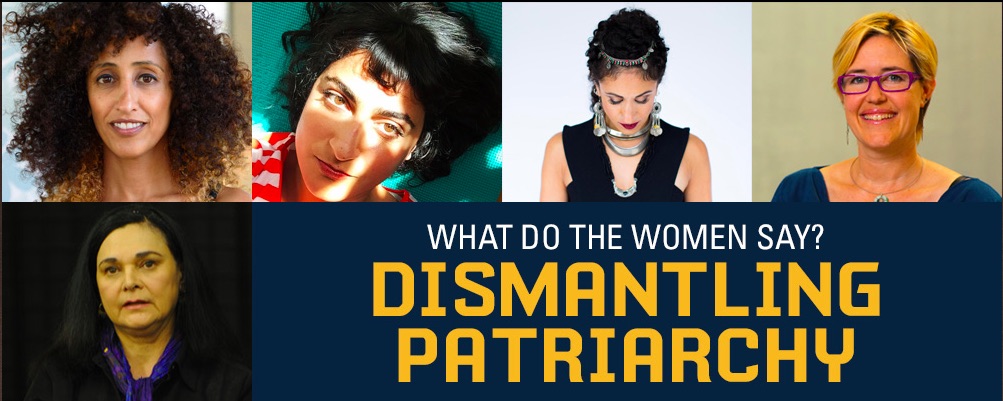reflections by co-director Burcu Tung.
On March 8, 2018, I listened to stories from four brave women who, in triumph, were able to share their stories, their struggles, as well as their inspirations. The performance, produced by San Francisco’s amazing Golden Thread, made it an especially special women’s day for me. International Women’s Day had started out as a mediocre day for me, laden with communication issues I have been having for a while with my husband. Communication issues to which I largely tend to question myself for: Why do I keep silent? Why do I not insist? Or do I actually bicker? Am I oppressing my needs and my desires? Or do I want too much and desire too much?
Feeling as if I was sinking in a madness of dichotomies, I sorely needed inspiration in my life. It was International Women’s day and I really thought that I should be honoring myself, as working mother, with something special. What I ended up experiencing during “What do the women say?” was healing beyond what I could have hoped for.
As the title of the event conveys, all of the performances centered around the importance of voice. As a woman hitting her 40s, I have been struggling strongly to find my voice. I always thought I was an OK writer. But what did I really convey with my words? Where was my voice in my writing? During the performances for “What women say”, I felt like I had an epiphany… I finally understood that voice is multi-faceted and complex. Beyond saying, voice is the courage to act. Voice is the courage to share and to bring compassion. And perhaps most importantly, voice is also the courage to be heard.
The first performance was a dramatic reading by Atosa Melody Babaoff who performed Famoosh Moshiri’s short story titled ‘White Torture’. The story, told in first person, had a very strong thread of loss that permeated through from the beginning until the end – the loss of a child, a sister, family. All taking place in a patriarchal society that so easily oppresses crucial rights that women should have. The losses of our heroine were etched deep into her soul. But a trigger awakened something within her, and she took action, with courage she thought she had lost. Famoosh Moshiri strikingly conveys the simultaneously contradictory consequences of these actions: while at once our heroine is in white torture, a captive of the government for interrogation, in a terrifying limbo, where she recalls her past in excruciating detail and questions herself she is also free and at peace for she has spoken. The story was chilling to the spine, and set an incredible stage for openness and compassion.
Naima Shalhoub gracefully took the stage next. Without an apology she immediately reminded us that our prisons are not only physical, but also mental. In our minds, are things we cage, or things that are caged by others we must undo. We must fight up a fight for our freedom. We must work with ourselves to undo these cages, by dismantling each barrier one by one. Naima courageously shared an intimate story of a trauma that blocked her from singing for a decade. And as Naima did begin to sing to us, tears of joy flowed down my cheeks, grateful for the opportunity of hearing her immaculate voice. Grateful for receiving hear healing, and very much grateful for her own healing.
Following Naima was Yasmine Diaz and her autobiographical art. Her collages tell her experience of Yemen when she was a teenager and are a testament to her perseverance and strength. Yasmine was almost forced to marry a boy she did not know at the age of 15. By the time she was 18, Yasmine decided she had enough, left her family, and changed her name. How much courage must it takes to sever one’s ties with their family. How much pain? It took Yasmine almost 20 years to personally explore her past, the time gap itself a reflection the hardship one must endure and the wounds one must tend to overcome such a great leap.
And the final piece of the evening was an excerpt from the Judge, a documentary about a Palestinian lawyer who became the countries first Sher’ia Judge, a position traditionally only held by men. A woman who spoke up. A woman not afraid to use her voice, despite having all the odds being stacked up against her. A truly inspiring woman.Our voices have been oppressed and silenced. Some of us have even chosen silence. And some of us, are still dismantling the barriers in our minds so that we can once again find our voice. Voice. We have a lot to say. And a lot to hear. In that process we also have a lot to heal. The performances at “What the Women Have to Say” on March 8, 2018 exemplified for me the transformative power of performance and the expression of voice.
Our voices have been oppressed and silenced. Some of us have even chosen silence. And some of us, are still dismantling the barriers in our minds so that we can once again find our voice. Voice. We have a lot to say. And a lot to hear. In that process we also have a lot to heal. The performances at “What the Women Have to Say” on March 8, 2018 exemplified for me the transformative power of performance and the expression of voice.

